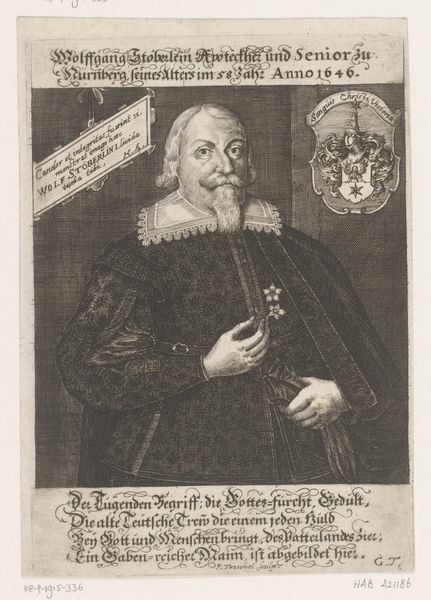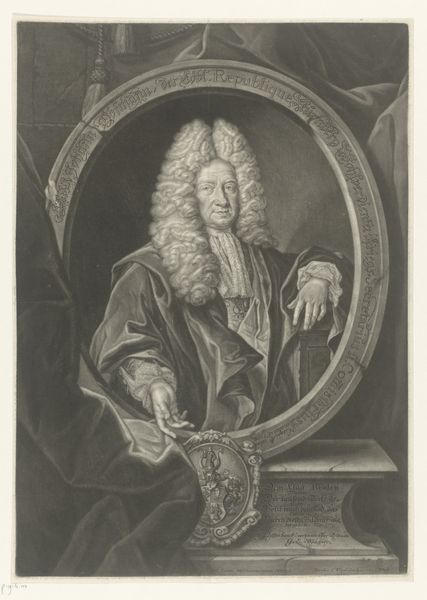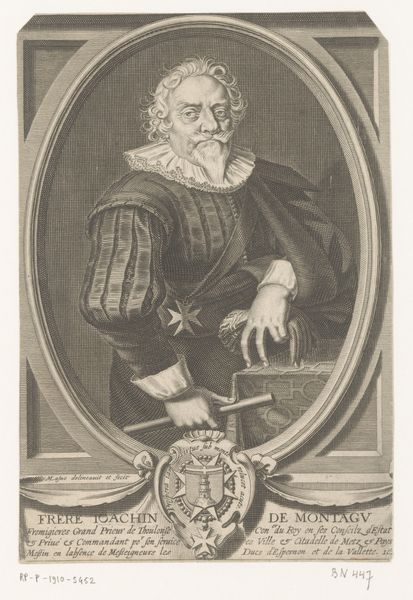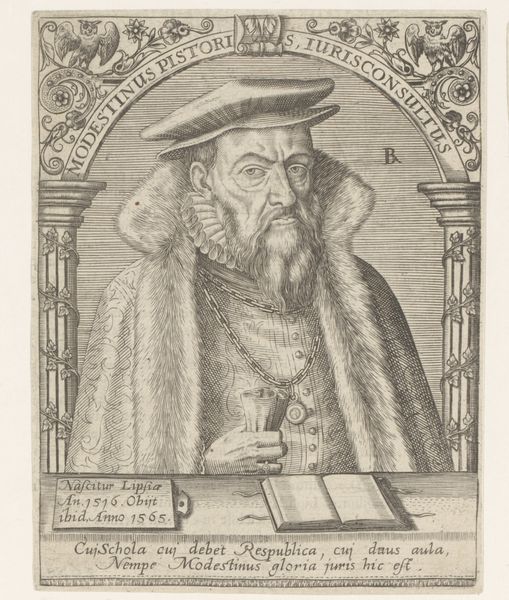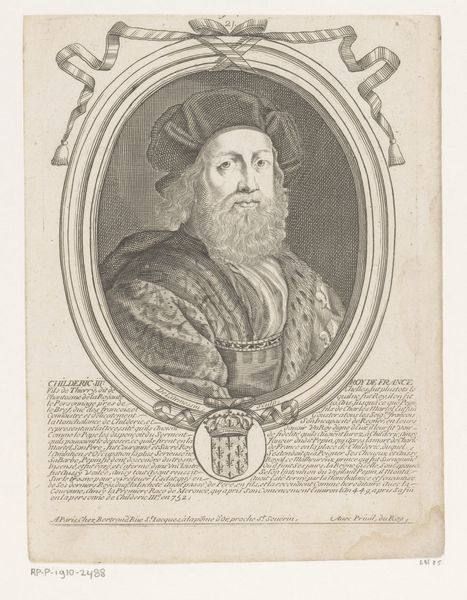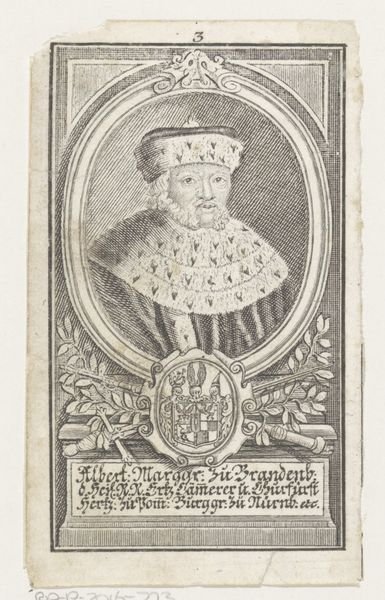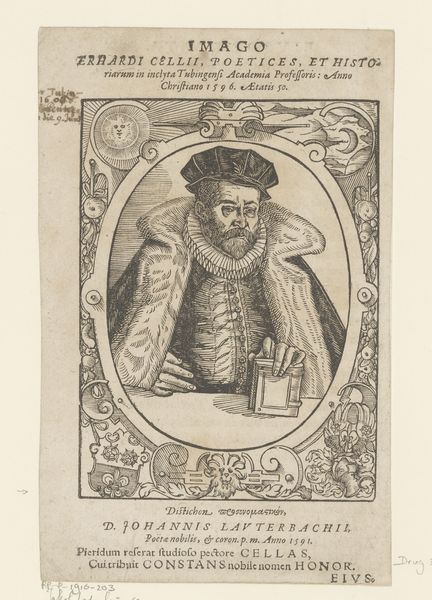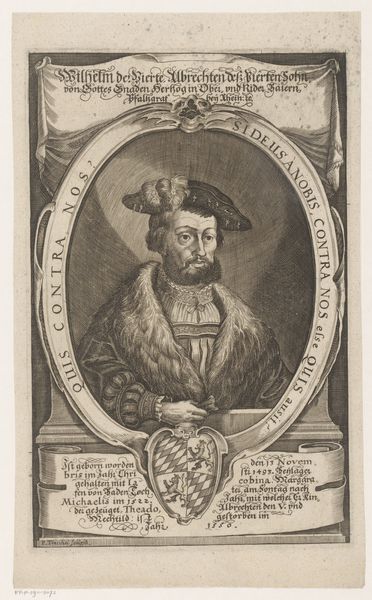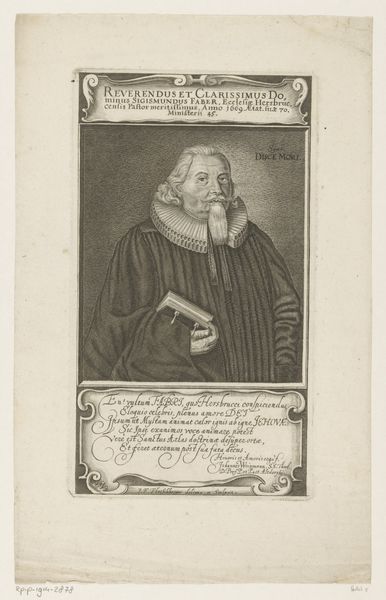
Portret van Georg Friedrich, graaf van Hohenlohe-Langenburg 1610 - 1671
0:00
0:00
#
pencil drawn
#
aged paper
#
toned paper
#
light pencil work
#
photo restoration
#
pencil sketch
#
old engraving style
#
personal sketchbook
#
old-timey
#
19th century
Dimensions: height 228 mm, width 153 mm
Copyright: Rijks Museum: Open Domain
Curator: Look at the crisp detail in this engraving, circa 1610-1671. The Rijksmuseum holds this piece titled "Portret van Georg Friedrich, graaf van Hohenlohe-Langenburg", created by Lukas Schnitzer. What are your initial thoughts? Editor: The gentleman's severe gaze strikes me. It speaks to a deeply hierarchical society. I'm instantly drawn to considering the portrait as a performance of power and status within his historical moment. Curator: Notice the pillar beside him, engraved with the words "Fortuna Bvlla"—Fortune is a bubble. Schnitzer is presenting a figure aware of life's fleeting nature, reminding viewers to maintain their honor above all else. Editor: Exactly! That memento mori theme highlights the vulnerability inherent in even the most privileged positions. But how complicit is Schnitzer in upholding this figure's image? Consider how those lace details and opulent fabrics serve to create a deliberately elevated and detached persona. Curator: Symbolism runs deep, doesn't it? Consider the sword—both an emblem of his military status and a classical symbol of courage and justice. This work reminds us of the weight of lineage. The engraving strives to eternalize his memory through these recurring symbols. Editor: Indeed, Schnitzer encodes a specific kind of masculinity for posterity. But let's not forget those left out of the frame— the laboring classes and women excluded from this vision of leadership. We need to question the ideals and systems this image tacitly promotes. Curator: Absolutely, those silent presences outside the frame must be considered, but looking closely at the iconography offers us insight into how the leaders of this period perceived themselves. Editor: Examining this engraving, recognizing how identity is shaped, constructed, and consumed through portraiture is paramount. This image can teach us to resist uncritically consuming legacies. Curator: Perhaps. Considering how portraiture as a method evolved during this period allows us a lens into what those enduring narratives might suggest. Editor: An invaluable task to be sure. Hopefully more institutions like the Rijksmuseum consider carefully how these histories are presented.
Comments
No comments
Be the first to comment and join the conversation on the ultimate creative platform.
